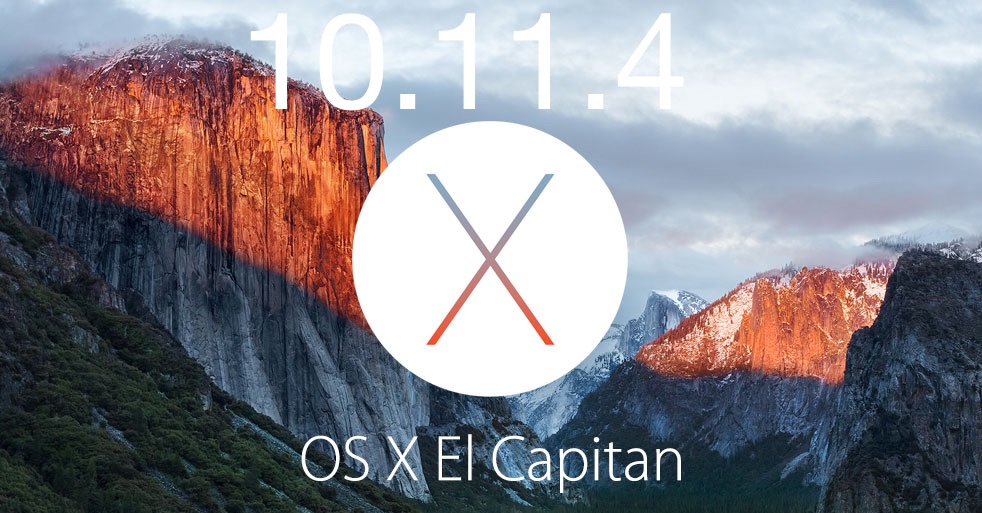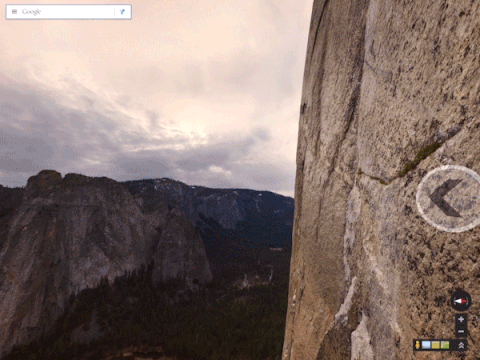Performing an El Capitan-to-Sierra upgrade is easy. Although it does not come like a push-one-button-and-proceed method, the truth is it’s quite close.
- Download El Cap
- El Cap Download Sites
- El Cap High School Merced
- El Cap High
- El Cap St. Pete
- El Capitan High School
- Download El Capitan Ios
Download El Cap
Nov 22, 2016 Well, I can't say I figured it out but I was able to download El Cap. I stopped trying on my GF's computer and when I got to work this morning I tried it from an imac running the same 10.6.8 OS and the same version of app store and it worked.I've loaded the 6+ gb file on a thumbdrive and will take it to her this evening. Thanks again babowa. El Capitan UltraHD Background Wallpaper for Wide 16:10 5:3 Widescreen WUXGA WXGA WGA 4K UHD TV 16:9 4K & 8K Ultra HD 2160p 1440p 1080p 900p 720p UHD 16:9 2160p 1440p 1080p 900p 720p Standard 4:3 5:4 3:2 Fullscreen UXGA SXGA DVGA HVGA Tablet 1:1 iPad 1/2/Mini Mobile 4:3 5:3 3:2 16:9 5:4 UXGA WGA DVGA HVGA 2160p 1440p 1080p 900p 720p SXGA Dual 16:10 5:3 16:9 4:3 5:4 WUXGA WXGA. Connection Issues. We are unable to fetch information from our download server. If you have an ad-blocker installed, please temporarily deactivate it.
Requirements for Upgrading from El Capitan to Sierra
Before we proceed with our step-by-step guide, allow us to answer an important question that some Mac users have in mind: “Can an old Mac still upgrade to Sierra?”
The answer is, of course, a YES. However, there are a few minimum requirements that need to be met, such as the following:
- 2 GB RAM
- 8 GB Storage Space
- Mac Models: Late 2009 iMac, 2009 MacBook, 2010 MacBook Pro, 2010 MacBook Air, 2010 Mac Mini, 2010 Mac Pro
Once you are certain that your Mac has met the requirements above, make sure you have backed up your Mac. This backup will come in handy in case something comes up in the process of upgrading to High Sierra.
Pro Tip: Scan your Mac for performance issues, junk files, harmful apps, and security threats
that can cause system issues or slow performance.
Special offer. About Outbyte, uninstall instructions, EULA, Privacy Policy.
Upgrading from El Capitan to Sierra
After backing up your Mac’s important files and folders, it’s time to get started. Here’s how to upgrade from El Capitan to Sierra.
1. Download High Sierra from the App Store.
High Sierra is available for download from the App Store. To get it, follow these steps:

- Open the Mac App Store by simply clicking on the App Store icon in the dock.
- Navigate to the Featured tab.
- Find macOS Sierra in the rightmost column and click on it.
- Click Download.
- At this point, the download will start. It may take long, especially if it’s your first time accessing the App Store. Just be patient.
- Once the download is completed, the installer should launch automatically.
2. Start the Upgrade.
With the High Sierra installer ready, it’s time to actually install it. Here’s how:
- The High Sierra installer should now be open on your Mac. If you have accidentally quit it, you can restart it by going to the Applications folder and double-clicking on the installer.
- Click Continue to proceed.
- Press on the Agree button to agree with the software licensing terms and agreements flashed on your screen.
- Click on the Agree button again to verify your action.
- Hit Install.
- A new dialog box will pop up, requiring you to input your administrator password. Provide that information and click Add Helper.
- The High Sierra installer will begin copying the system files to the new target drive. The progress will show in a new window.
- As soon as all the system files are copied, your Mac will automatically reboot. Don’t panic if the restart process takes a while. It only means your Mac is coping with the installation process.
3. Utilize the Setup Assistant to Complete the Installation.
Your Mac should already be finished with the basic installation process. The next thing you should do is run the Setup Assistant to configure some important macOS High Sierra options and settings.
Take note, though, that if your Mac is configured to ask for your login details, a normal login window will show. Provide your login credentials so you can proceed with the following steps:

- The Setup Assistant starts off by asking you for your Apple ID details. If you wish to leave everything as it is, click the Set Up Later option.
- Let the Setup Assistant configure all vital services that need your Apple ID credentials. Simply provide your Apple ID password and hit Continue.
- Click Agree if you agree with the Terms and Conditions flashed on your screen.
- You will be asked to verify your action again. To continue, click Agree again.
- The Setup Assistant should then continue with configuring your iCloud account information. It will also ask you whether you want to set up iCloud Keychain. You can just skip it to avoid confusing yourself.
- Next, there will be options displayed on your screen regarding how you wish to use iCloud for storing images and documents. Choose which of them apply to you by clicking on the boxes next to each one of them:
- Store Files from Documents and Desktop in iCloud Drive – This option will allow you to automatically upload files from your Desktop and Documents folder to your iCloud Drive. Be mindful, though, that Apple only offers a limited amount of storage space for free users. If all this free space is exhausted, you will be asked to purchase additional storage.
- Store Photos and Videos in iCloud Photo Library – This will let you upload videos and images from your Photo Library to iCloud. As with the first option, you have to remember that you only have limited free storage space.
- Hit Continue.
- Wait for the Setup Assistant to finish the setup process.
- You will know when it’s done because you will be taken to your desktop.
Summary
We hope you found this guide useful. But before you download macOS Sierra and perform an upgrade, do not forget to clean up your Mac with a reliable Mac repair tool first. This way, you can ensure that nothing comes your way and keeps you from making the most of High Sierra.
Did we miss some important steps above? Do you know other, easier methods to upgrade from El Capitan from Sierra? We’d love to know. Comment on them below!
Jul 05, 2021 • Filed to: Solve Mac Problems • Proven solutions
Mac users get new software updates and versions more frequently than the other operating systems. That's both the blessing and curse for the Mac users. The latest software makes your Mac device compatible with the new technological developments. Still, it also makes the existing OS obsolete. That's why most Mac users with old devices try to update their Mac to OS X El Capitan. However, you can't update your Mac to El Capitan 10.11 if your Mac runs on software later than Mac OS X 10.6 Snow Leopard.
Is OS X El Capitan Still Available for Your Mac?
OS X El Capitan (10.11) was launched on 25 September 2015, and it is an improved version of OS X Yosemite (10.10). Improved window management, quick and responsive interface, spotlight search, and enhanced graphics were the prerequisites of El Capitan OS. However, if you are planning to update your Mac to OS X El Capitan, your device must fulfill the following requirements.
Space Requirements
You can't install OS X El Capitan unless your Mac has a free space of 8.8 GB. However, that's the space you need to install El Capitan on your Mac. You might have to free more space to run your Mac more smoothly because low space slows down system performance.
Hardware Compatibility
Most of the Mac models can install and run OS X El Capitan, but in some devices, you can't use full features of this OS due to hardware limitations. For instance, you can't use AirDrop on your Mac if you don't have a WiFi network compatible with PAN. The followings are devices that are compatible with OS X El Capitan.
- MacBook introduced in 2009 or later, plus MacBook (13-inch, Aluminum, Late 2008)
- MacBook Air introduced in late 2008 or later
- MacBook Pro introduced in mid-2007 or later
- Mac mini introduced in early 2009 or later
- iMac introduced in mid-2007 or later
- Mac Pro introduced in early 2008 or later
- Xserve models introduced in early 2009
RAM Compatibility
RAM is the temporary memory that supports the system to run apps and programs efficiently. Without enough RAM, trust me, you can't even run your native operating system smoothly. Similarly, you can't install El Capitan unless you have 2 GB RAM on your Mac.
Operating System Compatibility
El Cap Download Sites
Operating systems play a critical role in creating an operational environment for both the software and the hardware. If you have decided to update your Mac PC, you have to make sure that your device doesn't run the OS later than Mac OS X Snow Leopard 10. 6. 8.
People Also Search:
How to Update My Mac to OS X 10.11.6/10.11.4?
After you are done with checking the compatibility of your Mac device, it's time to follow some pre rituals to prepare your device for Mac OS X El Capitan 10.11. These steps are mandatory for the successful installation of El Capitan OS into your Mac, and Apple also suggests them.
Get Your Mac Ready for El Capitan Update
Unprepared installation of a new operating system can result in disappointment. Remember that you are going to get a relatively new OS for your older Mac. To increase the hardware compatibility of your Mac, you must go through a checklist for successful installation of OS X El Capitan.
Space in your Mac: This includes freeing space both on RAM and Disk drive. 2 GB RAM and 8.8 GB of disk space are mandatory because the installer would not proceed without the fulfillment of these hardware requirements.
Minimum battery requirement: During the OS update, a computer consumes battery quicker than the regular operations. Your Mac needs to have at least 45% battery to pass through the El Capitan installation.
Active Internet Connection: You can't proceed with any OS installation without an active internet connection. Along with the installation package, your Mac would also need some side installations throughout the update. Without the support of these plugins and drivers, you would be back to square one. So, an active connection is a must.
Update Apps: Outdated apps can halt the process of updating your Mac. As soon as the installation of Mac OS X El Capitan completes, you face a software crisis. Most of your apps would stop working, leaving you with a headache. That's why don't forget to update your apps before starting the update.
Backup Your Data: There's a high chance that you would lose your data during Mac OS X EI Capitan update because the new OS makes changes in every nook and corner of your PC. To prevent the possible data loss, make a double back up—one in the Time Machine and other in the external storage device. If there is any file missing after the El Capitan update, check how to recover files after OS X update.
Begin Update Process
Your device is ready to embrace Mac OS X El Capitan 10.11 after going through the steps mentioned earlier. Now it's time for some real action.
Step 1Visit the official Mac App Store and search for Mac OS X El Capitan. Your search result would Stake you to the El Capitan page. You can also download El Capitan without the App Store by the following links.
Step 2From the official El Capitan page, you can download your required version.
Step 3Once the download is done, the El Capitan installer will pop up on your screen.
Step 4Press the 'Continue' button and wait for the installation to begin. You can proceed with the installation by following the instructions of the installer.
Step 5The installation process does not take a long time. Once the installation is done, you can restore your data from Time Machine or external drive.
Recover Lost Files After OS X El Capitan Update
Do you remember those pre-installation steps? Those steps were taken to minimize the chances of data loss during the Mac OS X El Capitan installation. Despite these precautions, you are still at the risk of unprecedented data loss. You can lose data due to the following reasons.
Data loss due to corrupted files: If your Mac contains corrupted files, you will lose your data. During installation, the new OS tries to fix or delete corrupted files. These overwritten or deleted files would not appear after installation.
Nature of Mac OS X El Capitan's update: You will replace your older OS with a new version that is not tailor-made for your Mac. That's a significant shift in the environment of your Mac. Such kinds of major updates come with uncertainty, and you can't predict whether you are going to lose your data or not.

Hardware specifications: 2 GB RAM and 8.8 GB disk space is a standard requirement for El Capitan's update. But it takes a lot more from a Mac device to adapt to a newly enforced environment. A slight incompatibility can make you lose your data without any notice.
El Cap High School Merced
Lost Your Data After Mac OS X El Capitan: What's Next?
Data loss is one of the anticipated drawbacks of the installation of Mac OS X El Capitan. If you have lost your data after while updating your Mac and don't know what's next, it's time to get expert help.
Recoverit Data Recovery can be used for getting your documents, audio clips, videos, and photos back after Mac OS update. It uses high-tech codecs that are compatible with more than a thousand formats of files. Here are all the good reasons to trust Recoverit Data Recovery.
- Junk free installation for the data security of their users;
- High compatibility with Mac on different versions;
- Works effectively with every storage device: hard drive, USB drive, SD card, etc.;
- Deep scanning feature;
- Straightforward interface and quick data recovery.
El Cap High
Mac users can retrieve their lost data after OS X El Capitan Update by following these steps.
El Cap St. Pete
Step 1Download Recoverit and tap on its icon to launch it on your Mac
(If you can't find the Recoverit icon on your desktop, you can use Finder to search it.)
Step 2After running Recoverit successfully on your Mac, now choose the following options.
Step 3Select the location of the drive you want to recover files.
Step 4Use the 'Start' button to scan it. Scan retrieves all the data of your selected drive.
Step 5Using the option to 'Preview and Recover,' you can choose the files that you want to recover, and you are done.
El Capitan High School
Wrap Up
New updates always come with uncertainty for the old devices. However, you can reverse your loss of data by taking the precautionary steps. Despite these steps, you might lose a few of your files. But don't worry, an ace software like Recoverit can recover your data.
What's Wrong with Mac
Download El Capitan Ios
- Recover Your Mac
- Fix Your Mac
- Delete Your Mac
- Learn Mac Hacks